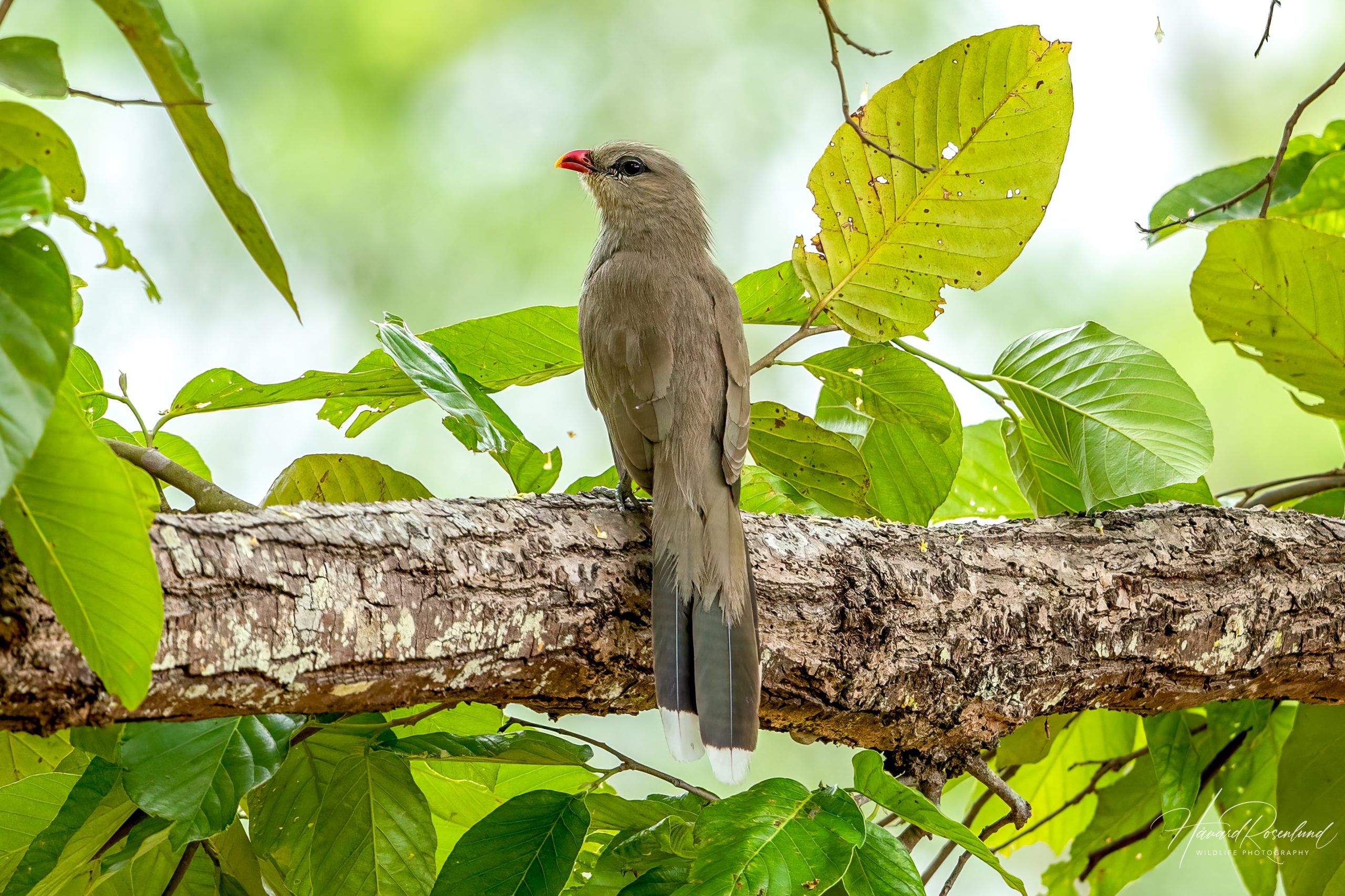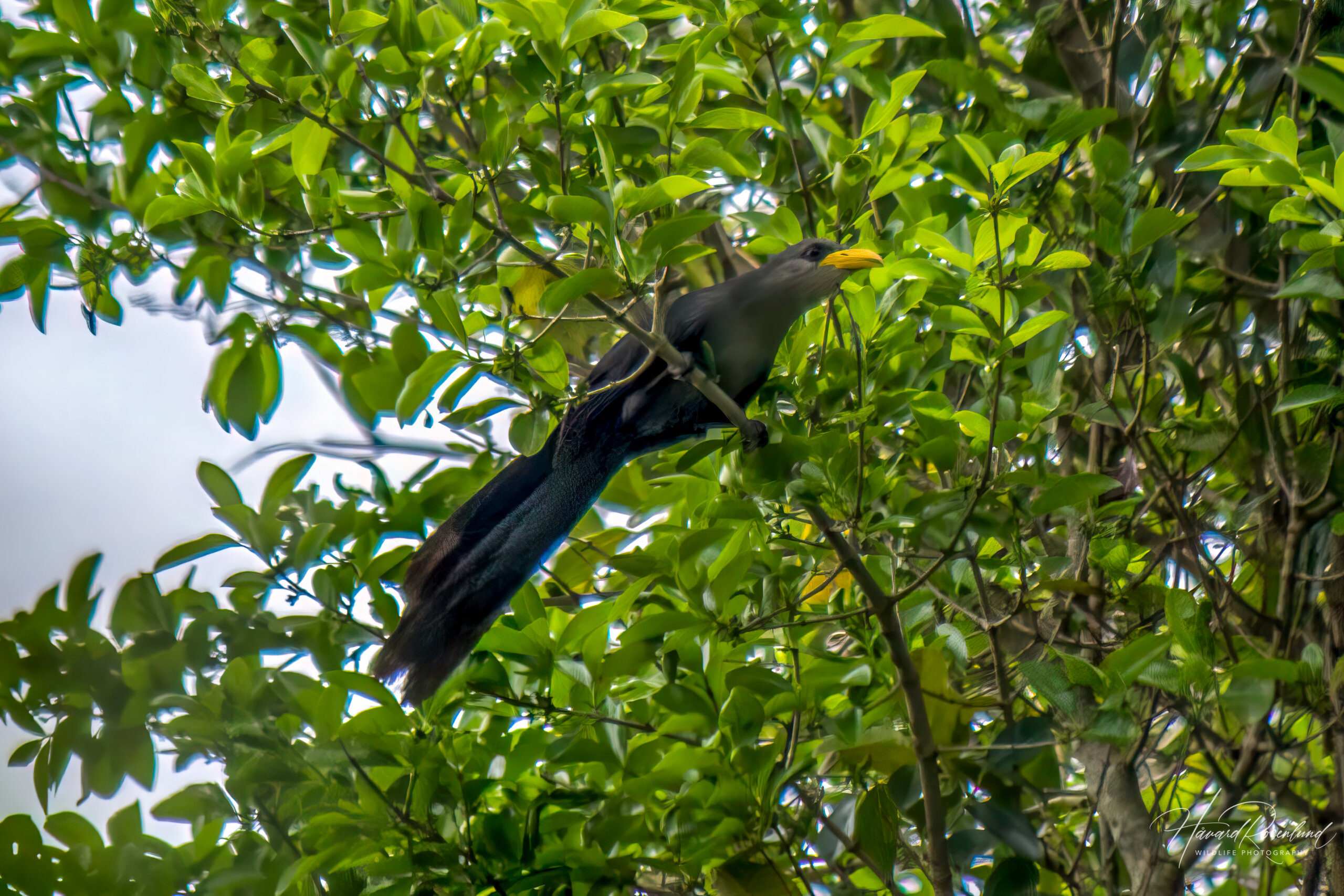Description
The sirkeer malkoha (Taccocua leschenaultii) is a striking species of non-parasitic cuckoo found primarily on the Indian subcontinent, including Sri Lanka. It measures about 42 to 44 cm (16.5-17.3) in length, including its long tail. The plumage is primarily greyish-brown, with a rufous belly. Its tail is long and graduated, with the outer feathers tipped in white. The sirkeer malkoha has a red curved bill, tipped yellow, and bare, black orbital skin around the eyes. Although similar in appearance to other malkohas, its distinct plumage and bill coloration sets it easily apart.
Diet & habitat
The sirkeer malkoha is typically found in a variety of habitats including dry deciduous forests, scrublands, and open country with scattered trees. This species primarily feeds on insects and other small invertebrates, which it primarily forages from the ground. It has a particular fondness for caterpillars and locusts but will also consume small reptiles and occasionally fruits. The bird’s feeding technique involves stealthily moving through ground vegetation to catch prey with a swift pounce.
Behavior
The sirkeer malkoha is generally solitary or found in pairs. It is a rather secretive bird, often staying hidden in dense foliage. Despite this, it is not shy and can sometimes be observed foraging in more open areas. This bird exhibits a slow and deliberate flight pattern, typically flying short distances from one tree to another. Vocalizations are infrequent but include a range of sharp and short shrieks.
Nesting
Breeding season for the sirkeer malkoha generally occurs from March to August, coinciding with the monsoon season in its range. The species is known to construct large, untidy nests made of sticks, usually placed in the fork of a tree or bush. The female typically lays 2 to 3 eggs, which are white with a slight gloss. Both parents share the responsibility of incubating the eggs, which takes about 15 to 17 days. The chicks are born altricial, meaning they are hatched helpless and require significant parental care. Fledging occurs roughly 18 to 20 days after hatching, with the young continuing to be fed by the parents for several weeks thereafter.
Status
The sirkeer malkoha is classified as least concern by the IUCN. It has a wide range and is relatively adaptable to different habitats, which contributes to its stable population. However, like many species, it faces threats from habitat destruction and fragmentation due to agricultural expansion and urban development.





